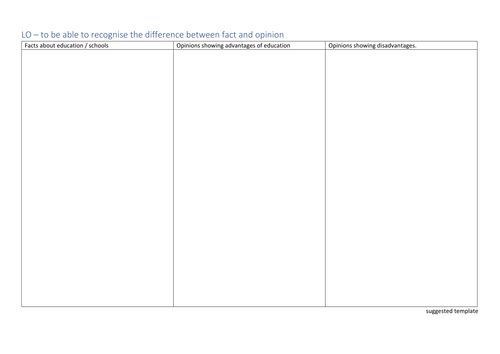




Drawing on the new History Curriculum and focussing on Aims: Strands 4 and 5 this resource includes:
A collection of nine extended quotes (with summary information) from contemporary sources,
An explanation of five activities that can be carried out using these resources
Planning Templates to support arguments and a chart to help summarise arguments about Workhouses
Learning Objectives
• To understand historical concepts such as continuity and change, cause and consequence, similarity, difference and significance,
• To make connections, draw contrasts, analyse trends, frame historically-valid questions and create their own structured accounts, including written narratives and analyses
• To understand the methods of historical enquiry, including how evidence is used rigorously to make historical claims, and discern how and why contrasting arguments and interpretations of the past have been constructed.
Learning Outcomes:
Pupils will be able to:
• Recognise the difference between fact and opinion.
• recognise and discern between arguments made for and against education.
• draw on primary resources to produce a reasoned debate on the pros and cons of universal education.
• produce their own persuasive argument in favour (or against) the introduction of universal education.
• produce a balanced argument on the advantages and disadvantages of universal education.
• Produce their own written narrative of life in a school.
Get this resource as part of a bundle and save up to 65%
A bundle is a package of resources grouped together to teach a particular topic, or a series of lessons, in one place.
The Victorians - A complete Unit of Work - with Guided Reading
A complete Programme of work for teaching the Victorians in either Key Stage 2 or Key Stage 3. The pack includes Summary Planning providing a suggested sequence of teaching which includes Time-line work and a series of Historical Investigation and debate activities based using quotes from people alive in the Victorian times and Victorian novels. The pack also includes planning for five groups of Guided reading, drawing on a combination of Victorian and contemporary novelists. Additionally, there are ten comprehensions included that could be used as additional whole class activities or as homework.
The Victorians - A complete Unit of Work
A complete Programme of work for teaching the Victorians in either Key Stage 2 or Key Stage 3. The pack includes Summary Planning providing a suggested sequence of teaching which includes Time-line work and a series of Historical Investigation and debate activities based using quotes from people alive in the Victorian times and Victorian novels. Additionally, there are ten comprehensions included that could be used as additional whole class activities or as homework.
Something went wrong, please try again later.
This resource hasn't been reviewed yet
To ensure quality for our reviews, only customers who have downloaded this resource can review it
Report this resourceto let us know if it violates our terms and conditions.
Our customer service team will review your report and will be in touch.
